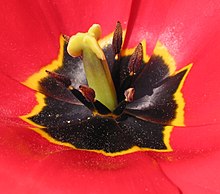Hermaphroditism
hermaphroditism is the presence in a living being of functional reproductive organs of both sexes, male and female.
Hermaphroditism can be simultaneous or sequential. In the first case the organism has both sexes throughout its fertile life, while in the second it changes sex during that. If the organism is male and later becomes a female, it is protandrous. If the reverse is the case, it is a protogynous organism. Most sequential hermaphrodites only change sex once, although there are some species that can do so multiple times.
Scope of hermaphroditism
As a reproductive strategy, hermaphroditism is ideal for animals that find it difficult to find a mate, either because of their habitat, their low population, their isolation, or their slow movement. The disadvantage that it would present is a lower efficiency in reproductive tasks due to the lack of specialization.
Most hermaphrodites are said to be non-functional because although it is possible, it is rare (especially in animals) for self-fertilization to occur, which is a fact only in some hermaphrodite species.
Species
Hermaphroditism is widely represented among flowering plants (angiosperms).
In animals, true hermaphroditism as a means of reproduction occurs in invertebrates such as sea stars, snails, and earthworms; and, in various fishes.
- In arthropods
In arthropods, the presence of intracellular symbionts, transmitted from generation to generation, can parasitize the reproductive system of males, producing feminization. In some cases, this feminization is incomplete, so intersex phenotypes may appear.
Research revealed that some females were actually genotypically male, meaning sex determination was determined by the symbiont rather than chromosomes. Different bacteria, such as Wolbachia, Paramixidia or Microspiridia, can be feminizing endosymbionts.
If, due to these symbiotic bacteria, the differentiation of the androgen gland is inhibited, that is, the gland that generates male hormones is blocked, the female phenotype appears in genetically male individuals. If, on the other hand, this block is imperfect, intersex individuals appear.
Other representations
Severe sexual dimorphism can be confused with hermaphroditism, even though it isn't. This is the case of some echinoderm parasitic snails, among which the parasitic male (very small) can be found inside the female.
Pseudohermaphrodites are those animals that internally possess the reproductive organs of one sex but their external appearance is that of the other sex.
There are also sequential hermaphrodites, those that change sex over the course of their lives, as in the case of bass fish and grouper.
Hermaphroditism and humans
In the human species there are several cases that are similar to hermaphroditism, which have been identified as pseudohermaphroditism due to the inability to reproduce in both ways. A male-only disease, Klinefelter syndrome sometimes manifests itself through features such as gynecomastia (large breast glands), cryptorchidism, azoospermia (deficient sperm production), or micropenis, but it could hardly be considered a form of intersex.
The medical term true hermaphroditism is applied to cases with gonads containing tissue from both sexes in different proportions, since in some cases they contain ovarian follicles and seminiferous tubules in the same gonad (ovotestis). However, the ability to produce eggs and sperm at the same time has not been verified in humans, since typically one of the two types does not develop correctly.
Contenido relacionado
Habitat
Arm
Asparagine
